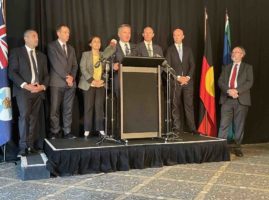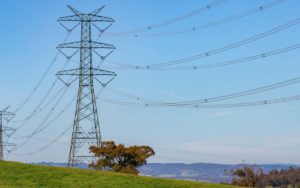State and federal energy ministers have dumped a controversial new rule proposal on grid connections in what is being hailed as a major victory for wind, solar and storage projects, and another significant rebuff to the Energy Security Board.
The ESB’s push for Locational Marginal Pricing caused outrage in many parts of the renewable investment community, with the Smart Energy Council labelling it a “solar-stopper” and others warning it would result in billions of dollars of investments going overseas.
The LMP proposal was as controversial and hotly disputed as the ESB’s proposed design for a capacity mechanism. Like that proposal, common sense won out over energy market ideology and ministers have agreed to turn to a formula proposed by the industry itself.
The win was immediately celebrated by the SEC, which described the ESB proposal as as a “terrible idea” that it had been “stubbornly pushing” for years.
“As we pointed out in this important RenewEconomy article, the Smart Energy Council is fundamentally opposed to SolarStopper, a proposal that would stifle the development of new solar and wind farms,” it said in a statement.
“Australia will not achieve 82% renewables by 2030 with Locational Marginal Pricing.”
The question about grid congestion – locations and pricing – has been a problem for the industry for years, along with connection and commissioning issues.
Some solar projects have had half their output cut because of grid congestion – such as the Molong and Manildra solar farms in NSW, which RenewEconomy reported on in detail in January (even though the Guardian claimed the same report as an exclusive on Friday!!).
See: Solar farm output cut by half as renewables cop brunt of grid congestion
The ministers have told the ESB to dump the LCM proposal and work with government officials to develop a “more orderly” mechanism to manage grid congestion. They have been told to come back with proposals in the middle of the year.
The ESB was similarly rebuffed by ministers after pushing its version of the capacity mechanism for many years – with the encouragement of the then Coalition government and its anti-renewables energy minster Angus Taylor, and many now question if the ESB has, or should have, a future.
RenewEconomy understands that ministers explicitly ruled out the former government’s LMP models, which they noted were heavily opposed by industry.
They supported greater network transparency so that renewable developers can make fully informed decisions, and a new model known as the Congestion Relief Model they say can deliver net benefits for industry and consumers of up to $5 billion and lower emissions by 23 million tonnes by 2050.
“This is the result of a long industry campaign led by Nexa Advisory in collaboration with the Smart Energy Council, the Clean Energy Investor Group and other industry organisations,” said Nexa Advisory’s Stephanie Bashir, one of lead campaigners against the proposal.
“We commend energy ministers for reaching the decision to formally reject the LMP. Few may understand what the end of locational marginal pricing means, but the whole country will feel the effect when they come to pay their power bills.
“This was an example of how the private energy sector, using its deep expertise and genuine desire for a smooth transition to renewables can come together to bring about a positive outcome for all Australians.”
The Clean Energy Investors Group also welcomed the decision. “This is a clear signal to investors that energy ministers are listening to industry and are focused on accelerating the decarbonisation of Australia’s energy system,” its CEO Simon Corbell said in a statement.
The ministers also agreed to commission an annual status report on progress across all sectors towards emission reduction targets, and agreed on five strategic priorities for climate and energy policy in the coming year.
- Transforming Australia’s energy system to align with net zero while providing more affordable, secure, and reliable energy to Australians, (including improving regulatory certainty and efficiency for, and accelerating delivery of, dispatchable renewable energy, storage and nationally significant transmission projects);
- Efficiently and effectively contributing to the achievement of all Australian emissions reduction targets;
- Investing in Australia’s adaptation and resilience to climate change;
- Empowering and comprehensively engaging with Australia’s regions and remote communities, including First Nations, on the pathway to decarbonization and Australia becoming a renewable energy superpower;
- Delivering a coordinated and strategic approach to achieving improvements in energy productivity across the economy.
Work also continues on introducing an emissions reduction objective into the National Energy Objectives, which is seen as a critical reform but which is being opposed by the fossil fuel lobby, in the form of the Energy Council of Australia, which wants it to be a voluntary rather than obligatory.
The CRM and priority access model reforms, if approved later this year, are estimated to yield net benefits for industry and consumers of up to $5 billion (NPV) and lower emissions by 23 million tonnes by 2050.










